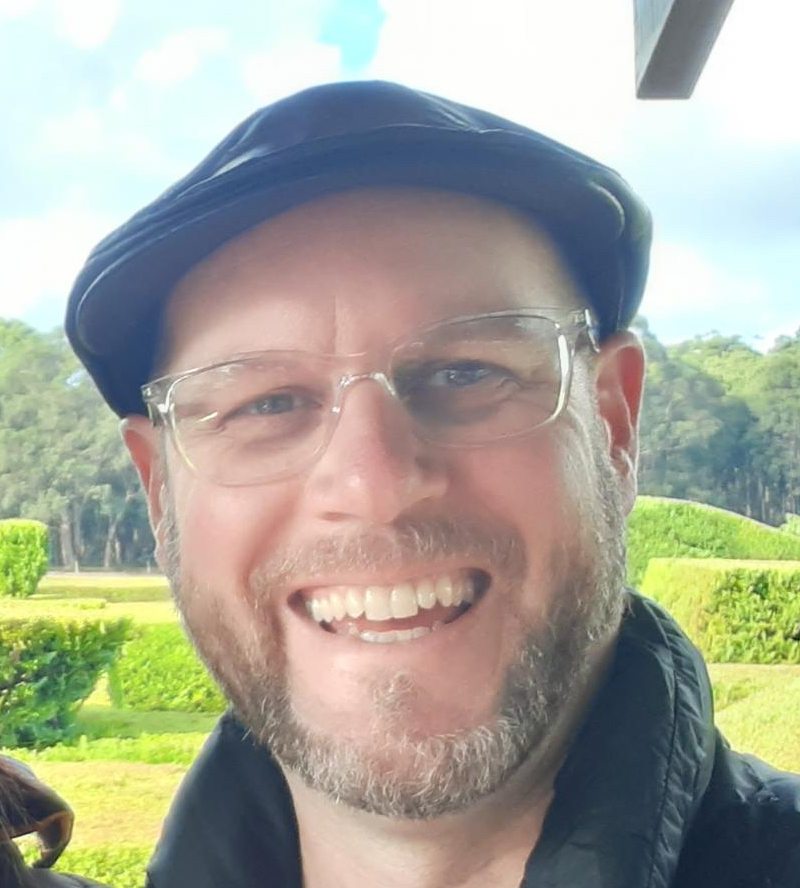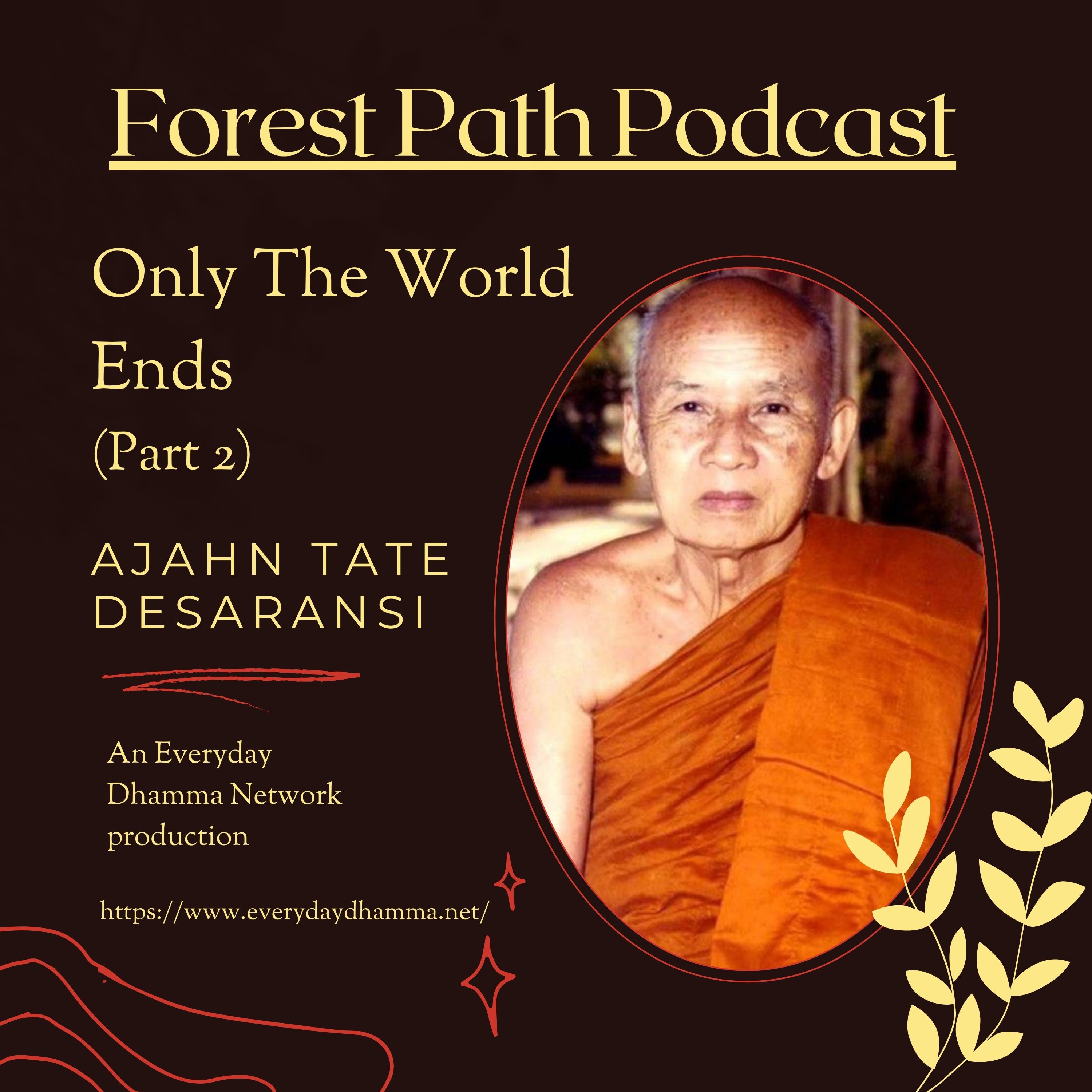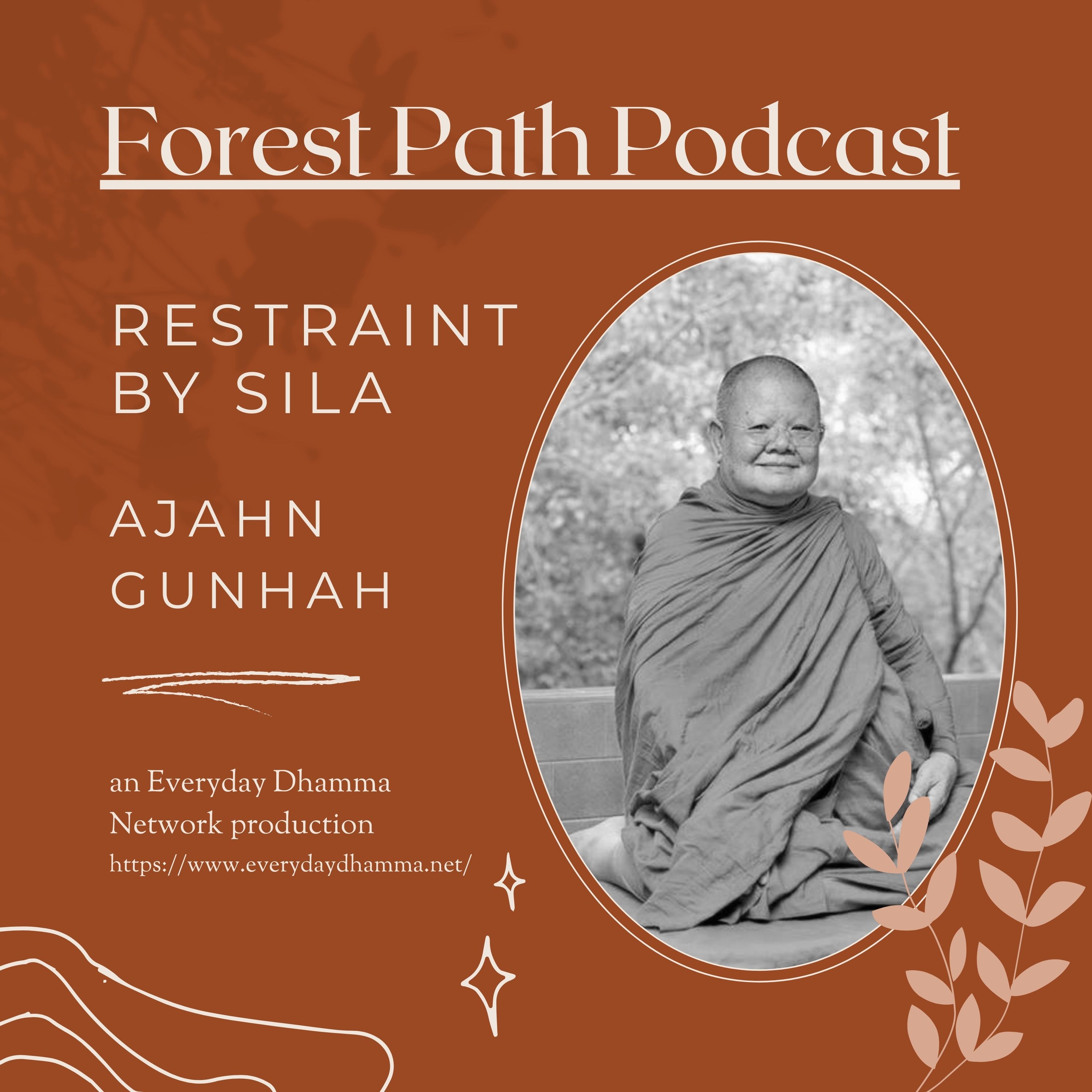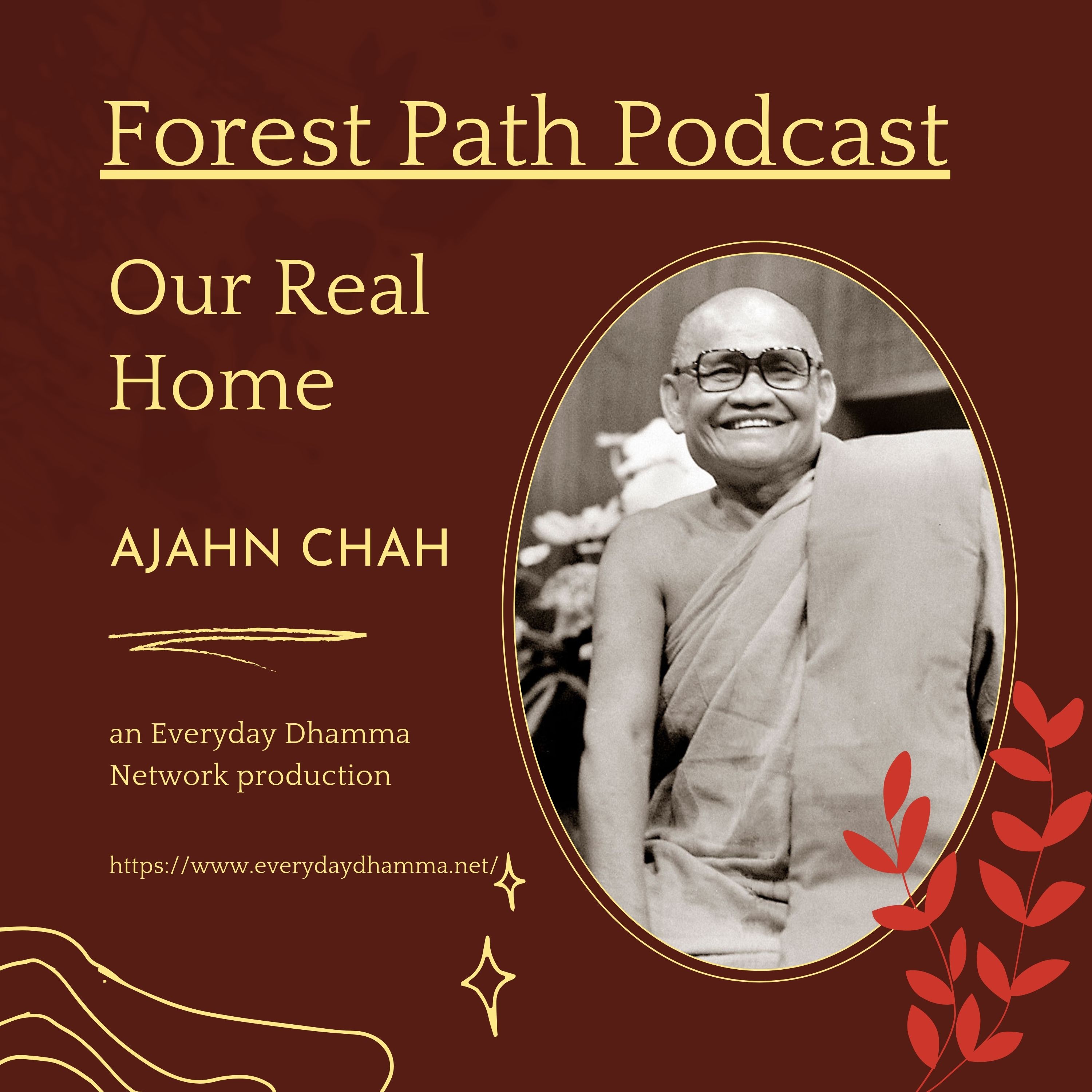Episode Transcript
Khanda – The Aggregates Of Being
by Ajahn Tate
I will talk about the Dhamma, for you to listen to. The Dhamma is not something external that is miles way. We have come across quite a lot of it already. We may have forgotten some of it. The Dhamma is close by. It is our “being”. Because it is so handy, we take it for granted and tend to forget about it. Being so handy, we think we can examine it anytime we choose.
The word “Dhamma” in this Khandha (Aggregates) sense refers to everything in the cosmos. This is what it is. This is where it is to be found. This is Dhamma.
The words “seeing Dhamma” refer to seeing the reality of existence. This is what it means. I call on you to understand that this is the way things are. It means seeing the (true) nature of Dhamma.
I want you to understand that anything and everything about our being is nothing but Dhamma. For example, we can see that there is birth, aging and death associated with our body. However, we don’t want to look at this and so we miss seeing the Dhamma. The reason we do not see Dhamma is we don’t find it satisfying. We don’t believe in it. We are not excited about the way things are. However, should satisfaction, belief and excitement in the Dhamma occur, set about investigating it. A clarity, a luminosity will then arise in your heart.
This is the reason why those who examine Dhamma are always examining their body. I implore you to have faith, belief, satisfaction and excitement in the various Dhamma of the body. This will be of great benefit in making up for your shortcomings.
What I am going to explain today is one of the many aspects of Dhamma. This aspect is called the 5 Khandha (Aggregates). These are our being, not some distant thing. Every aspect of our being can be referred to as the 5 Khandha. The 5 Khandha are: Rupa, Vedanā, Saññā, Sankhāra and Viññāna. Rupa is evident as our body (form). Vedanā is happy or painful or neither happy nor painful feelings. These all occur in our being. Saññā is memory and that which gives meaning to various things. Sankhāra is thought and imagination. Viññāna is consciousness.
Today, I am going to explain just these five. They all form our being. They coalesce in our being. All five are entirely in our being, however, we fail to examine them, and I am going to explain “why”, so that you understand.
Rupa
We examine this from the point of view of the body being disgustingly filthy, not beautiful, not pretty. Every aspect of our body is like this. Sweat and skin flakes flow from the body. They are excrement. We look at this and see it as filth, so we take a shower to clean this rotten body. A body that is rotten at any time of day, rotten even before we die. Disgusting substances ooze out of the body. Colloquially, we call this stuff crap. That is to say, it is still vile for a while and so we call it crap. It is not actual shit. It is concealed for a little while, but it still stinks. This collection of crap we have in our body right now. We have the complete set, mucus, saliva, ear wax, sleep. It’s all crap and even though it is only slightly gross, we don’t like looking at it. We call this covering our eyes and ears. Whatever we excrete from the body is nothing but crap.
Any amount of waste is called crap. For example, wood shavings, saw dust and coconut husks. All are considered to be crap. A portion of the food we eat goes towards nourishing the body. It gets excreted without much attention and we call this shit. This is Dhamma. I call on you to investigate this as being Dhamma. See it as Dhamma. Whoever hides from the truth, it’s still the truth. I am saying this so that you can see the facts, that this is Dhamma. This is referred to as investigation of the body as being excrement. The body can also be analysed as being Dhatu (elements). The elements are: the earth element, the water element, the fire element and the air element. These are the four elements. This body is a lump of earth. It is not male or female. The nomenclature of male and female is simply a convention, a supposition. In reality, they are lumps of elements and nothing else. These lumps are just the four elements. This is one aspect of Dhamma and is referred to as Dhamma Dhatu.
You could also analyse the body from the point of view of Aniccaṁ, impermanence. Or, you could see the body as Dukkhaṁ, something (torment) you cannot withstand. Or, you could see it as Anattā, void of any self.
This mass we have right now, I have said is the 4 Dhatu, earth, water, fire and air. These are disgusting excrement. This is all the same thing. It is Dhamma. As I have said, these are the 5 Khandha and we call this our body. So, where else would you go? The Dhamma can already be found in our bodies. When you have complete belief in this, you will exclaim, “Oh! We already possess the Dhamma. We already have all the Dhamma right here in our body.” [Have strong faith, then investigate the body but this time with contempt and indignation1. Investigate the body as 4 Dhatu or as filth. Examine it as being a Khandha.]
Rupa Khandha
Rupa Khandha is a lump of pain and suffering. From the time of birth, it experiences suffering and hardship. However, we choose to believe we do not suffer. When we have a fever and sickness, we search for medicine to make us better. When we have become tired through walking, we sit down. When we are tired of sitting, we lie down. These things obscure the suffering, so that we don’t see it. We don’t see the suffering and so we don’t see the Dhamma. See the suffering. This is what you need to do to see the Dhamma. When you change your posture as mentioned, pain doesn’t arise. As pain does not occur, you fail to see the Dhamma.
When you deconstruct things, you will be able to explain them in great detail. There will be no end to the words you could say. If you break it all down and you see things vividly in your heart, you will discover that the body is completely insubstantial. You will see it is just a form that can move around, and nothing more.
Vedanā Khandha
This refers to Sukha (happiness), Dukkha (suffering) or Upekkhā, equanimity or indifference. Investigate Dukkha in the way that I have told you. Various aches and pains, hunger and thirst, freezing and boiling hot, or various weaknesses, can all be lumped together as Dukkha. People just want Sukha but get Dukkha, which they don’t want to talk about. It is still Dukkha, even if they don’t want to discuss it. It is not the case that by not discussing Dukkha, it vanishes. When anxiety, confusion and worry arise, people say, “Jeez, that was really painful.” However, it escapes them to investigate this as being Dukkha.
Happy feelings are few and far between. We have happiness, but not much, and then Dukkha returns. In most instances, Dukkha is perceived as Sukha. This is what is called being deluded and mistaken about Dukkha being Sukha.
Upekkhā Vedanā, now, where on earth can you find this? It is not often found in us. Upekkhā Vedanā is very hard to find. When Upekkhā does occur, it doesn’t last long. It’s gone in a flash. However, it is seen very clearly by those people that enter Samādhi Samāpatti4. In these states the Citta converges into a single, central point. This is how you experience Upekkhā Vedanā. If you are no good at Samādhi, thinking of all sorts of things, here, there and everywhere, in the past and in the future, you won’t experience Upekkhā at all. Whenever, anyone sends out their thoughts all over the place, the Citta won’t converge. They won’t achieve Samādhi Bhāvanā and they won’t experience Upekkhā Vedanā.
This is another Khandha and it is called Vedanā Khandha.
Saññā Khandha
This refers to recognising/remembering every single sense object. All of our experiences in the past and the future are concentrated and remembered here in our heart. This is where they are nurtured. This is what we call Saññā.
Sankhāra Khandha
This is thinking and imagining anything that can be thought about, day or night, without end. This is Sankhāra Khandha.
Viññāna Khandha
This Viññāna is the Viññāna in the five Khandha. There are two types of Viññāna. The first is Viññāna in the five Khandha. The second is the Patisandhi Viññāna. The Patisandhi Viññāna is the re-birth consciousness that is the first consciousness that occurs at birth. The Viññāna of the five Khandha means the “knowing” that arises with Phassa (sense contact), which then vanishes. For example, the eye sees a form (object). “The one who knows”5 this form is called Viññāna. After this, Saññā takes over. It recognises the type of form. Saññā then passes away.
Sankhāra then jumps in and starts thinking and imagining. The awareness of the form in the first place is called Viññāna Khandha and is one of the five Khandha.
Whether it is the Viññāna of the five Khandha or the Patisandhi Viññāna, they are basically the same thing, not miles apart. They are in the heart, the same heart, but they have different functions. If it has the function of “the one who knows” or awareness arising from Phassa with the six Āyatana (the six senses, sight, sound, taste, smell, touch, thought) it is called Viññāna Khandha. Patisandhi Viññāna is that which guides birth. If this Viññāna did not happen, there would be no birth. It is the culmination of Avijjā, Tanhā, Upādāna and Kamma6. These coalesce in this Viññāna.
In reality, Avijjā is the heart. Tanhā, is the heart. Upādāna is the heart. Kamma is the heart. When we talk about them coalescing in one place, this is just for the purposes of description. In reality, we don’t refer to this as coalescing. These four Dhamma simply perform their function for the being that is to take birth. A being that takes birth must have a complete set of these four Dhamma if birth is to take place.
Why are these called Khandha? Khandha translates as a component of a group. These are components. Just as an external vessel in which we put rice, water, flowers, etc., this is one type of vessel, which people use to store different things so that they don’t become scattered. What we have here is the same. Khandha is a way of arranging Rupa, Vedanā, Saññā and Viññāna as a group so as to preserve their relationship.
The conventional, everyday world can be explained in many ways. The complete explanation is the story of the heart, which can be called the Khandha, or Dhātu or Āyatanā or various other names. But it all boils down to a single spot, the heart. As soon as we apply various labels to it, we become complacent and forget about the originator, the heart. Everything at that is born into this world depends most significantly on the heart. The heart is the one who sees the Dhamma. The heart is superior to all else. If the heart did not exist, nothing in the world would be. The entire world springs forth from the heart. Just like building a massive house, if there was no heart, who would build the house? How could anyone live if there was no heart? They would be nothing.
The heart is paramount. We live only because of the heart.
I call on you to explore what I have said. You don’t need to investigate something miles away. All the Dhamma is to be found in our being. I call on you to have resolute faith in the heart, in the Dhamma, the words of the Lord Buddha. To the extent that you exclaim, “Oh! The Dhamma exist right here within us.” Whether you go north or south, near or far, every aspect of the Dhamma is present in this body. We carry the Dhamma around with us, but we fail to observe it and this is why we don’t see it.
If there comes a time when you do observe what’s right here, a clear understanding of the Dhamma will arise and you’ll say, “Oh, I get it. The Dhamma lies within us and that is all there is to it.” It exists right here. There is no need to rush around (to find it). We already have the Dhamma right here in our being. This is the Teaching of Lord Buddha. Every sacred text emanates from this Dhamma and nothing else.




